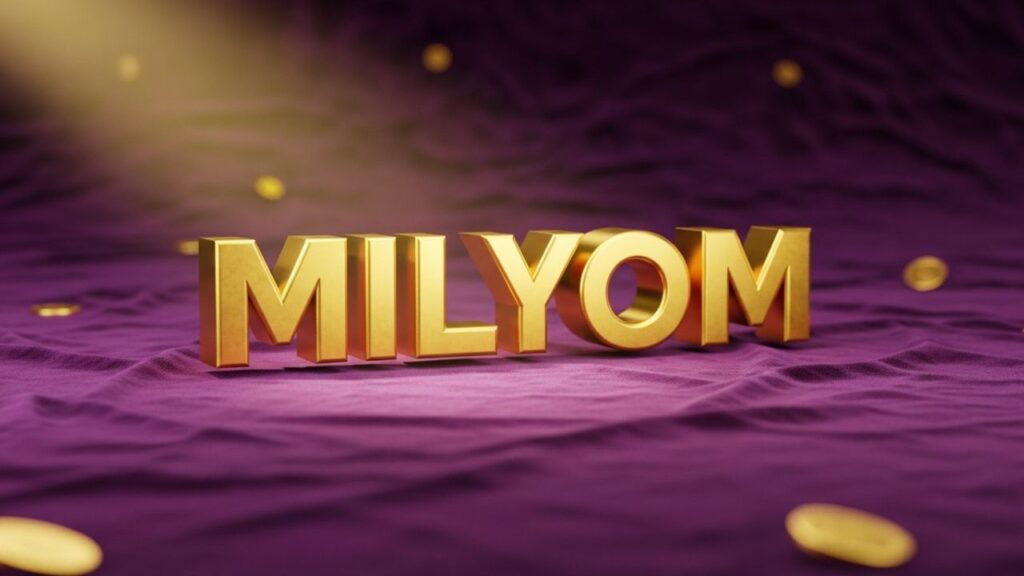Introduction
In the digital age, language evolves rapidly and sometimes unpredictable. One term that has recently emerged and sparked curiosity is milyom. In this article we will examine what “milyom” is, explore its possible origins, discuss why it matters today, and look at the ways you might use it—or encounter it—in modern culture, branding and online identity.
What is milyom?
At first glance, milyom is a word without a clearly defined meaning. It does not appear in standard dictionaries or in mainstream language references. Instead, it shows up in internet discussions, blogs and articles as an intriguing term whose meaning is still under construction.
Origins and theories
-
One popular theory holds that “milyom” is a random or auto-generated word that gained traction simply because people started searching it.
-
Another view is that “milyom” may derive from or be influenced by the word “million” or similar sounding concepts—implying scale, value or abundance.
-
Some sources suggest “milyom” could be a brand-name or plate for a digital platform, identity or creative project rather than a conventional term.
Because of this uncertainty, “milyom” functions as a kind of placeholder—symbolic, flexible, and open to interpretation.
Why milyom matters now
Curiosity and virality
One of the reasons “milyom” is notable is its viral appeal: people search for it because they don’t know what it means, which in turn heightens its visibility. This sort of curious attention underscores how language in the digital era can gain traction even without explicit meaning.
Branding, identity and novelty
In branding and digital identity, uniqueness matters a great deal. A term like —short, memorable, uncrowded—can be appealing as a name for an app, a startup, a creative project or a personal brand. As one commentary puts it: “the journey of Milyom … already shows promise as a modern concept that represents innovation and adaptability.”
Cultural and linguistic flexibility
“Milyom” is not anchored to a specific language, tradition or product (so far). That gives it global adaptability. Writers exploring the term frame it as a word that “carries mystery, beauty or innovation.” In a world where cross-cultural branding and digital identities matter, that kind of versatility adds value.
Possible uses and contexts for milyom
1. As a brand or digital platform
If you are starting a business, launching an app or developing a community, you could consider as a name. It’s relatively unused, easy to remember, globally neutral, and carries a sense of modernity and uniqueness.
2. As a personal identity or creative alias
For content creators, artists or gamers, using “milyom” as a username or alias offers something distinctive. Its novelty means fewer conflicts and stronger memorability.
3. As a symbolic or metaphorical term
Beyond branding, “milyom” can be used metaphorically—to imply value, abundance, uniqueness or collective identity. For example: “We each bring our own milyom of ideas to the table.” One analysis sees the term functioning like a metaphorical unit of value.
4. As part of digital culture and memes
Because “milyom” is still undefined, it is open to playful use. It could appear in memes, user handles, art pieces, and other cultural artefacts where novelty is celebrated. The ambiguity itself becomes part of the appeal.
Benefits and challenges of adopting milyom
Benefits
-
Distinctiveness: It stands out in a sea of saturated terms and brand names.
-
Global applicability: No strong cultural or linguistic baggage tied to it yet.
-
Flexibility: Works across industries—from tech to lifestyle, education to art.
-
Curiosity factor: The very fact that people ask “What is milyom?” can help drive attention and discovery.
Challenges
-
Lack of established meaning: Without a clear definition, “milyom” might feel vague and require context.
-
Potential for confusion: Users might misinterpret or dismiss it as nonsensical.
-
Risk of overuse as hype: If used without substance, the novelty may fade quickly.
-
Trademark/brand risk: While currently unclaimed or lightly used, formalizing a brand around “milyom” would require verifying legal and market space.
How to use effectively
Define your own meaning
If you adopt “milyom” (for a brand, platform or project), clarify what it stands for: what value, vision or identity you attach to it. This helps transform the word from curiosity to meaningful label.
Create consistent branding
Use “milyom” across visual identity, messaging, domain names, social media handles. Consistency supports recall and builds recognition.
Connect to story or purpose
Rather than using the word alone, build a narrative: why “milyom”? What does it represent? A founder story, tagline or mission statement helps anchor the word.
Leverage curiosity
Because “milyom” invites questions, you can use this to spark engagement: ask your audience what they think it means, or reveal the definition in creative ways. This interactive aspect can build interest.
Stay authentic
Since the word’s meaning is flexible, it’s vital that whatever you associate with “milyom” aligns with real value—product, service or content. Otherwise it risks being perceived as empty marketing.
The future
Looking ahead, the term has potential to evolve in several directions:
-
It could become a recognized brand, platform or product name.
-
It might gain popular meaning via creative usage in digital culture, such as memes, social media handles or artistic works.
-
It may be adopted in niche industries (tech, start-ups, design) as a symbol of innovation and uniqueness.
-
On the flip side, if it remains loosely defined and widely used without substance, it might fade or become generic.
Conclusion
The concept of illustrates how language, branding and digital culture intersect in our era. It is a word without a fixed meaning—yet that is partly its power. In the space of mystery and novelty, “milyom” offers an open canvas for creativity, identity and innovation. Whether you encounter it as a search term, a brand name, a social handle or a creative alias, the key lies in how you define and deploy it. If you choose to adopt “milyom,” give it purpose, tell its story, and connect it to something real—then the word may evolve from curiosity into recognition.





